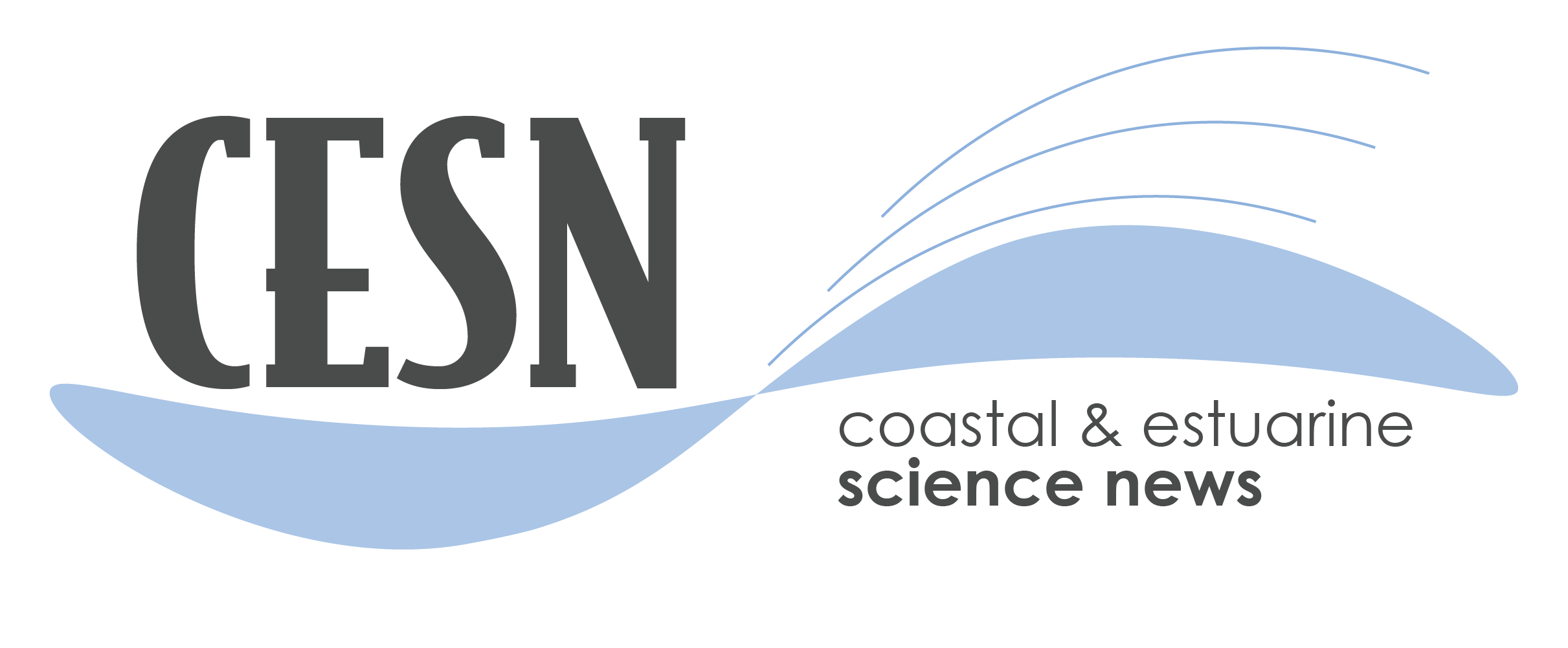|
CESN Español

Coastal & Estuarine Science News (CESN)
The mission of Coastal & Estuarine Science News (CESN) is to highlight the latest research in the journal Estuaries and Coasts that is relevant to environmental managers. It is a free electronic newsletter delivered to subscribers on a bi-monthly basis. Sign up today!
CESN Editorial Board
- Merryl Alber, CESN Editor, University of Georgia
- Janet Fang, CESN Science Writer/Managing Editor, Coastal & Estuarine Research Federation
Adding Life to Hardened Urban Shorelines
Testing Cold Hardiness in Tropical Fish
Tidal Flooding Contributes Significantly to Eutrophication
How Do Human Communities Benefit from Restoration?
Can Living Shorelines Be Used to Retrofit Armored Structures?
How Mechanically Harvesting Oysters Affects Seagrass Recovery
A Constructed Oyster Reef Seven Years In
Invasion of the Blue Crabs
No Geese Allowed
A Decision Tool for Designing Living Shorelines
Effects of Living Shorelines on Nekton Can Take Years
Does Dredging Cause Wetland Loss? Yes, But…
Hybrid Living Shorelines: Combining Rocks and Mangroves
Cordgrass in Natural vs. Restored Marshes on Long Island Sound
Hitting a Snag! The Effects of Submerged Logs on Fish in Queensland Estuaries
Send in the Drones!
Modeling Shellfish Nitrogen Removal
Integrating Uncertainty in Wetland Migration Estimates
The Lasting Benefits of Temporary Sills
Assessing Vulnerability on the Cameroon Coast
Fewer People, More Wildlife
Healthy Mangrove Ecosystems are Resilient to Sea-Level Rise in the Marshall Islands
Lessons From Over 20 Years of SETs in Puget Sound
Centuries-Old Shell Middens Help Stabilize Tampa Bay Shorelines
2024 Issue 2
Assessing Elevation in Mangrove Forests
Are Environmentally Friendly Moorings Better for Seagrass?
Dredged Materials Can Help With Marsh Elevation
Seascape Nurseries: Juvenile Fishes Link Multiple Habitats
2024 Issue 1
Why Aren't New York Marshes Keeping Pace With Sea-Level Rise?
Pilot Living Shoreline Projects Show Promising Results
Fish Response to Dam Removals
Using UAVs to Model the Hydrology of Tidal Wetlands
|